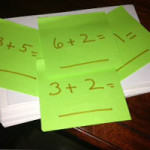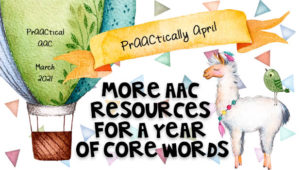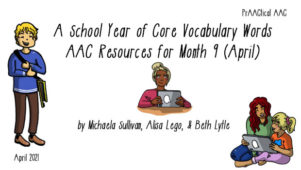Core in the Curriculum

Core words can easily be incorporated into academic curriculum. There just needs to be systematic planning for core word vocabulary and then of course the joining of fringe words. One of the best visual explanations of core words is in the now ‘famous’ you tube video Language Stealers (HD). If you have not seen it, it is worth watching for many reasons but in the context of this post, it perfectly illustrates how you can teach about Greek and Roman history with core words.
Planning for Core Words for the Classroom (& ALL School Activities)
- Have the core word communication board with you at ALL times– If you (SLP/Educator) have your core word communication board, you can model and teach the target core words during all lessons. A premise of this approach is that the student has access to their core word vocabulary display on a no-tech communication board or on their AAC device.
- Choose specific core words to teach– Choose 1-5 specific core words to teach over a specific time frame. The time frame is usually a week or two but then as new words are added you can follow a pattern of approximately 12 core words per month. Words will build on one another as teaching and learning expand.
- Develop or use a lesson plan for the curriculum– Once you have the goals and activities to teach the curriculum topic or concept, script out or add in how you will model or use the target core words. The activities should be meaningful to the students with lots of opportunities for active participation and communication.
- Create visual support materials– Create visual support materials that highlight the target words that you can use as ‘props’ to further enhance ‘seeing’ the target words. Consider a core word key chain, or even a ‘pen light’ to highlight the target words. Let the students interact with the core words on both their AAC display and the ‘props’. Being an active participant to the learning process is essential.
- Use language facilitation teaching strategies– As you are teaching the target core words, use lots of repetition with variety, aided language input, recasting, scaffolding, and descriptive talking/think aloud strategies.
- Collaborate, collaborate, collaborate– If at all possible, teaching core words in the curriculum is a collaboration between educators and SLP’s. Of course it is great to have parents and caregivers participate as well. Educators can relate well to the core word philosophy as core words overlap heavily with dolch words.
- Teach first, then test- Spend some time teaching and then build in comprehension checks. Just make sure that if you ask questions, they are phrased so that a core word response works and also build in opportunities for expressive language checks through communication temptations and wait and signal opportunities. Realize core word teaching may take longer than learning concrete nouns but mastering core word vocabulary can help you with all curriculum.
- Remember fringe vocabulary will be needed also– We do not think fringe or extended vocabulary is bad, we do think students need to learn it. However, if 80% or more of our language is core words we need to focus on what we need to use to communicate most of the time. Add fringe in for specific topics or subjects and try to keep to the 4:1 ratio of core word to fringe word teaching. The underlying premise here is that there is a school/district philosophy/method for static placement of core versus fringe words.
Math Examples
5 Target Core Words from September: “almost”, “take”, “time”, “place”, “nice” (see other specific math core words)
Math Class– addition and core words
SLP/Educator Models: “time for math”, “take 4 pencils and then “take” 2 more and you have 6, “it’s nice when we all do it together”, “we almost ran out of time but we finished”, “nice adding up those numbers”.
Students: Have a stack of index or flash cards with addition problems or numbers on them and each student gets a turn to tell classmate to “take ____” the correct number of items to be counted or have a box or bag filled with objects to count or math flash cards and the student helper tells each classmate to ‘take some’, The class can vote on if they thought the item they just counted was nice or ‘boring’
Check out a Geometry Lesson by Gail Van Tatenhove on the Minspeak Teaching Material Exchange– Curriculum Supports.
Remember to build multiple opportunities for students to prAACtice using the core words into each lesson plan and activity.
Additional Resources
Curriculum Supports– excellent lessons for science, social studies, language arts, math, music, and art from Gail Van Tatenhove.
Pixon Project Curriculum Supports
Core Word Lesson Plans– A great resource for clinic and classroom core word lesson plans from PRC’s AAC Language Lab (some free content, some subscription fee).
Filed under: Strategy of the Month
Tagged With: core vocabulary, curriculum
This post was written by Robin Parker





